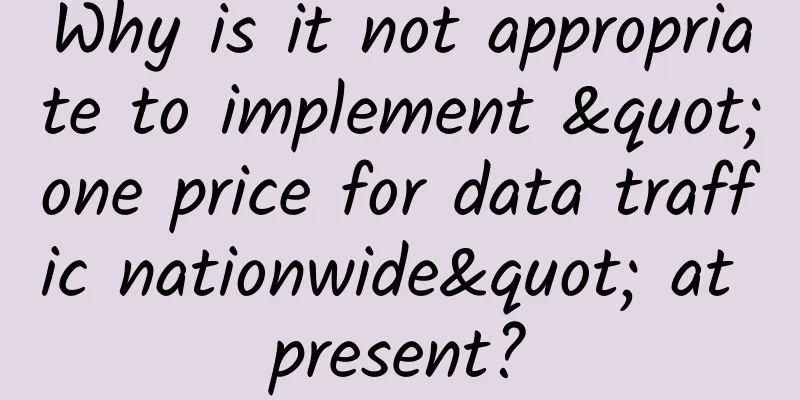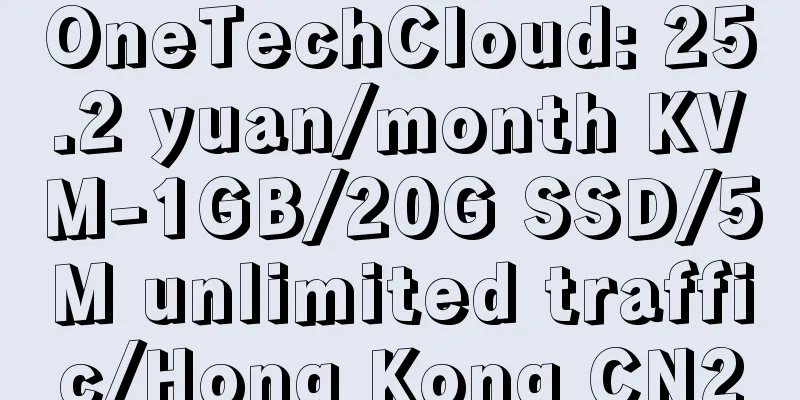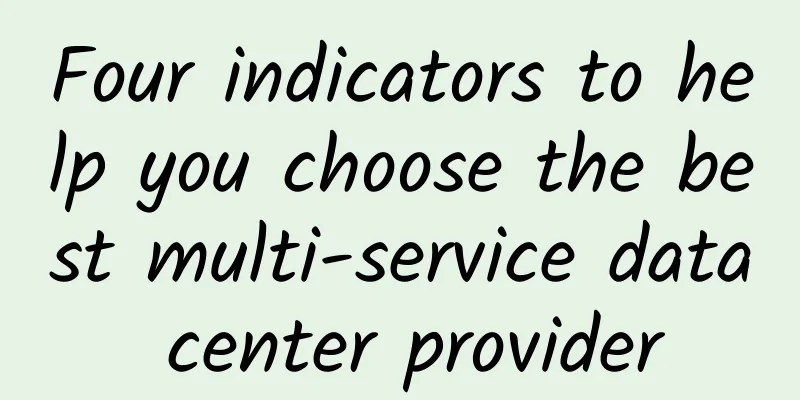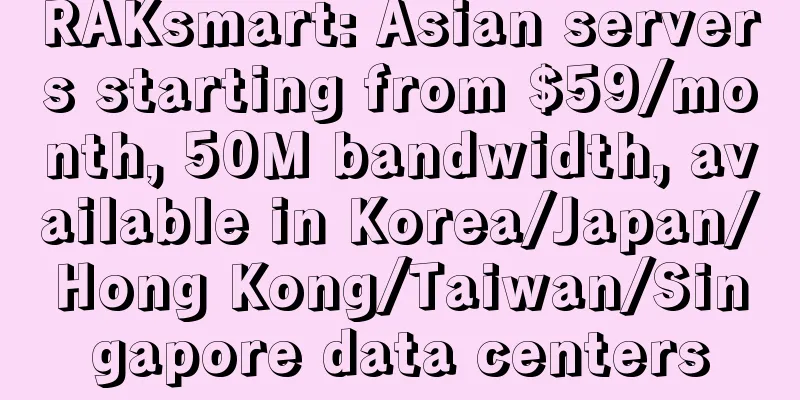Why is it not appropriate to implement "one price for data traffic nationwide" at present?

|
According to the 21st Century Business Herald, "Increasing speed and reducing fees to face the tough battle, the era of 'data roaming' will end." An insider revealed that "the Ministry of Industry and Information Technology is studying the issue of 'data roaming' that consumers have been discussing a lot. This is the focus of the Ministry of Industry and Information Technology's 2018 speed increase and fee reduction." Currently, the three major operators have launched different packages that include national and local traffic. For example, Beijing Telecom has launched unlimited packages for national and Beijing versions. The rates are as follows: Beijing Telecom's "Tianyi Unlimited" package national version: Beijing Telecom "Tianyi Unlimited" package Beijing version: 199 yuan can get unlimited data nationwide + 3,000 minutes of voice calls, 99 yuan can get unlimited data in Beijing + 3GB nationwide data + 500 minutes of voice calls. Users who travel around the country can choose the 199 yuan national version, and users who mainly travel in Beijing can choose the Beijing version. Why are there two packages? Both statements are wrong: 1. Because of the internal settlement of operators. The roaming charges before mobile voice were indeed due to settlement reasons, because the initial billing of fixed-line and mobile voice was "local + long-distance", and each area code was treated as an independent unit. But the data charges are not like this. Since the 2G era, the data charge of 3 cents per KB is the national data, and the operator's 3G package was also national data at the beginning. Later, local data packages were introduced because operators found that some users wanted to reduce data charges, and the demand for data roaming was also low. Therefore, local data packages were introduced based on national data. Taking China Unicom as an example, for the same rate, the local data package includes 150% of the national data package, and such packages were formulated by the group company from the beginning. 2. Because of cost differences. Communication services are different from mechanical manufacturing. The cost-plus pricing method is not applicable, but the cost amortization method should be used. Because the main cost of communication services comes from the amortization of network construction costs and network operation and maintenance (including equipment maintenance, electricity bills, rent, and employee wages, etc.), these costs are tens of billions of fixed costs, and the specific cost of each minute of voice, each text message, and each GB of traffic is very low, or close to zero. However, operators must apportion the huge fixed costs to specific voice, traffic, and text messages. Different packages are suitable for different groups of people, and they all bear this part of the cost together. The local call charges and long-distance charges 20 years ago, and the current local traffic, traffic and long-distance traffic, are different ways of sharing. Because of this sharing method, both users and operators are beneficiaries. Some people say, I just want to use the price of a local data package to enjoy the services of a national data package, 99 yuan includes unlimited data nationwide + 3,000 minutes of voice calls, how great. Why haven't operators launched this? Because if that were the case, the operator's costs would have nowhere to be amortized and it would lose money. Currently, the average data charges of operators have maintained a decline of more than 30% for three consecutive years, which is largely due to the launch of low-priced local data packages. Judging from the current trend, the average data charge reduction in 2018 will not be less than 30%. Unless there are policy changes, local data will still be an important source of price reduction. In the middle of last year, when China Telecom and China Unicom were promoting the 199 yuan nationwide unlimited data package, I conducted an online survey. If the tariffs were to drop further, the operators had two options: one was to launch a "139 yuan nationwide unlimited data package" and the other was to launch a "99 yuan local data package". The result was that the number of users who chose the two plans was similar. In other words, many people chose both tariffs. It can be imagined that people who choose the former often travel to other places, while those who choose the latter mainly stay in local areas. The conditions for making the current local data packages nationwide are not mature. If operators are not allowed to promote local data packages and must uniformly promote nationwide unlimited data packages, then while the national packages are being reduced in price, it is likely that those local package users with lower monthly communication fees will not benefit from the reduction in fees, and they may even have to spend more on communication fees each month. The picture below shows Beijing Unicom’s 99 yuan local data unlimited package. In fact, the local unlimited traffic package that includes 3GB or 4GB of national traffic is suitable for most users. The promotion on Beijing Unicom's official website in the picture below will cause ambiguity, and you can sue it for false advertising. However, the fact that it puts the national unlimited data package and the local data package together shows that it is not afraid of user comparison, and users can choose different packages according to their needs. If local traffic is not allowed, the daily rental card with local traffic rate like the one shown below by Beijing Mobile will not be launched. ***, who is the beneficiary? The key issue with current data package charges is not the different local and national pricing, but rather ① some extremely unreasonable charges that do not adapt to the development of the industry. For example, charges of more than 0.20 yuan per MB of domestic data flow and more than 0.2 yuan per minute of voice charges (unfortunately, the Beijing Mobile daily rental card in the picture above includes both). There are also ② the "abnormally high" charges for old packages compared to new packages, and ③ the new packages that do not allow old users to choose preferential prices, etc. The focus of government regulation should be on users and packages that are not affected by the fierce competition among operators, rather than encouraging operators to lower average rates by launching lower-rate packages, especially "high-priced" packages above 50 yuan, because the high ARPU value users brought by "high-priced" packages have always been the focus of competition among telecom operators. From this perspective, the cancellation of domestic long-distance and roaming charges for mobile phones will benefit about 30% of old users who use the old packages of operators and have lower average monthly communication charges. This is a good policy (although most media reporters and experts are not beneficiaries). In the current environment, the cancellation of local traffic charges will benefit the opposite group of people, those with higher monthly communication charges. These people are the targets of competition among operators and the people who benefit the most from the advancement of communication technology. Users like migrant worker Lao Ge are not beneficiaries (see "Migrant worker Lao Ge became famous by using the Internet. You can guess the beginning, but you can't guess the end"), which is not a good policy. I would like to reiterate the four suggestions I made in "Traffic is divided into local and long-distance, these reasons are not valid": |
<<: F5: Now is the time for digital transformation
>>: Issues that need to be resolved before NFV large-scale deployment
Recommend
In-depth interpretation of the principles and applications of HTTP/3
HTTP3 is the latest version of the HTTP protocol....
FDCservers: XEN in Hong Kong/Japan/Singapore and other data centers, monthly payment starts from $1.98
The tribe has shared information about FDCservers...
To be successful in 2018, operators need to rely on these three strategies
The story of 2017 has come to an end. On the surf...
European countries are intensively carrying out 5G spectrum auctions: Why the cost differences are so different
Compared to Italy, Austria's 5G sales look li...
Hostio: €5/month KVM-2GB/25GB/5TB/Netherlands data center
Hostio is a foreign hosting company founded in 20...
Large-scale commercial use is imminent! What will be the future development of 5G messaging?
At present, more than 100 operators around the wo...
To cope with the global food crisis, AI, 5G and machine vision join forces to "raise fish"
Today, the global food challenge has become a rea...
Gateway programming: How to reduce R&D costs through user gateways and caches?
If the user's traffic is like the surging wav...
2020 China Computer Education Conference: Building a University Computing Talent Ecosystem with an “Intelligent Base”
[51CTO.com original article] From December 18 to ...
A brief discussion on SD-WAN troubleshooting
What do you do when your SD-WAN has a problem or ...
Real-time advertising recommendation system implemented by SpringBoot and Apache Doris
This topic aims to provide readers with an in-dep...
F5 has been in the industry for 20 years and is still the top player. How did it become the top player in application delivery?
[51CTO.com original article] A financial client o...
Microsoft Accelerator Poetry Heart starts its journey to build an empathy platform with technological innovation
On March 15, 2018, the 11th Microsoft Accelerator...
RAKsmart: San Jose servers start at $46/month, 1GB unlimited data servers start at $199/month
RAKsmart's discounts continue this month. In ...
Now is the time to use 5G indoors
Operators have made huge investments in 5G RAN, w...





![[Black Friday] BandwagonHost offers 10% off on all items, starting at $44.9 per year, CN2 GIA line 10Gbps bandwidth optional](/upload/images/67cac21ad5baa.webp)


![[11.11]DogYun: 30% off on Elastic Cloud/20% off on Classic Cloud, get 1 yuan free for every 11 yuan you recharge, 100 yuan off for a dedicated server per month](/upload/images/67cabd2c6877a.webp)
